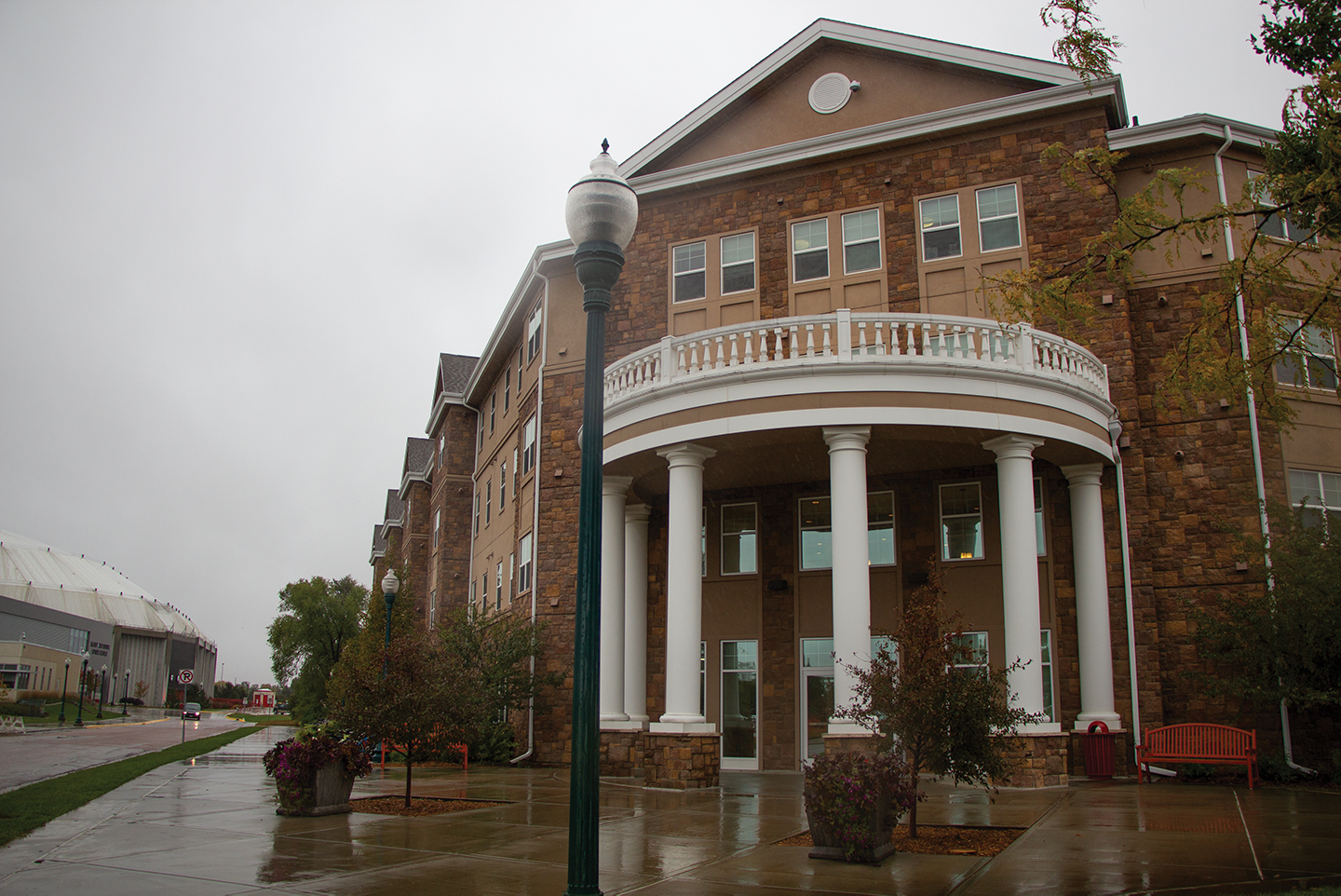
USD administration discredits Coyote Village destruction rumors
A popular rumor among students, that the university must tear down Coyote Village by 2020, has been discredited by USD administration.
The rumor includes stories of Coyote Village, which was built in 2010, being built too quickly, making its foundation and structure unsound and that the university will be required to take down the building by 2020.
A widespread rumor
Marcus Ireland, a former SGA senator and a senior political science, criminal justice and philosophy triple major, said he has heard this rumor from a variety of students on campus.
“So I’ve definitely heard rumors from other students about how the Coyote Village complex is supposedly going to be torn down because of like a shaky foundation, wood foundation, things like that,” Ireland said. “The reasons for why it needs to be torn down keep changing, but the idea is is that Coyote Village is supposedly being torn down in the very near future.”
Ireland also said the rumor is widespread, although he is not sure if all students take it seriously.
“I think that there’s probably a handful of people who have heard it and actually believed it might actually be in the process of working out when it’s going to get torn down,” he said. “But I think for the most part, a lot of people hear it and are kind of like ‘probably not.’”
Ireland, said he has heard residents of Coyote Village discussing the rumor, although he said he reassures them that it is not true.
“In the time that I’ve lived at USD in housing, there have been people that have made comments, usually around the idea around this rumor, so they help the spreading of the rumor,” Ireland said. “I’ve definitely heard residents talking about it.”
Scott Poulson, the vice president of enrollment, marketing and university relations, said rumors like this are common among the student body.
“From a university standpoint, we deal with these sort of rumors from time to time, somebody gets a wild hair and thinks that they understand something better than we do as an institution, and it happens,” Pohlson said.
Discrediting the claims
John Howe, the associate dean of student services and the overseer of university housing, said he first heard about this rumor at the first SGA meeting of this semester, when a senator asked him a question regarding overflowing occupancy. He said he was taken aback, but he addressed the rumor in the meeting and said it was false.
“I actually heard this rumor for the first time at the SGA meeting a few weeks ago, so that was definitely news that that would be news,” Howe said. “I directly supervise the director of housing and university housing, it’s never, ever been discussed at any institutional meeting that I’ve ever been to.”
Pohlson said he is also surprised by the rumor.
“I just don’t understand. It is our newest facility, our nicest facility, it’s the facility that every new student wants,” he said. “The rumor makes me laugh.”
Howe said each year, an auxiliary business plan is submitted to the Board of Regents which details the building and maintenance projects planned to do on each campus building. Although there are small projects scheduled, no major maintenance is scheduled to be done to Coyote Village in the next ten years, he said.
“Coyote Village actually had work done this past summer. All water heaters in one of the wings were all replaced, so it’s definitely part of that process again, but (major renovations) are not anything that we’re working on,” Howe said.
Pohlson said that if a rumor of this variety were to be true, the university would have to alert students immediately.
“The institution cannot lie. If we had some sort of indication that the foundation or something with Coyote Village needed to be redone, we would have to report that, the engineers would have to report that, the state auditors would have to report that,” Pohlson said.”We would have to tell you; we have people living in there. We would have to say if it was structurally unsound, and it’s not.”
Howe said students can find reliable information regarding the statuses of construction and maintenance of campus buildings on the SDBOR website.
“Everytime they have an open meeting, all of the documents, as long as they’re not personnel related, are publicly available,” he said. “So these auxiliary reports, when they’re presented, they’ll be on there.”


